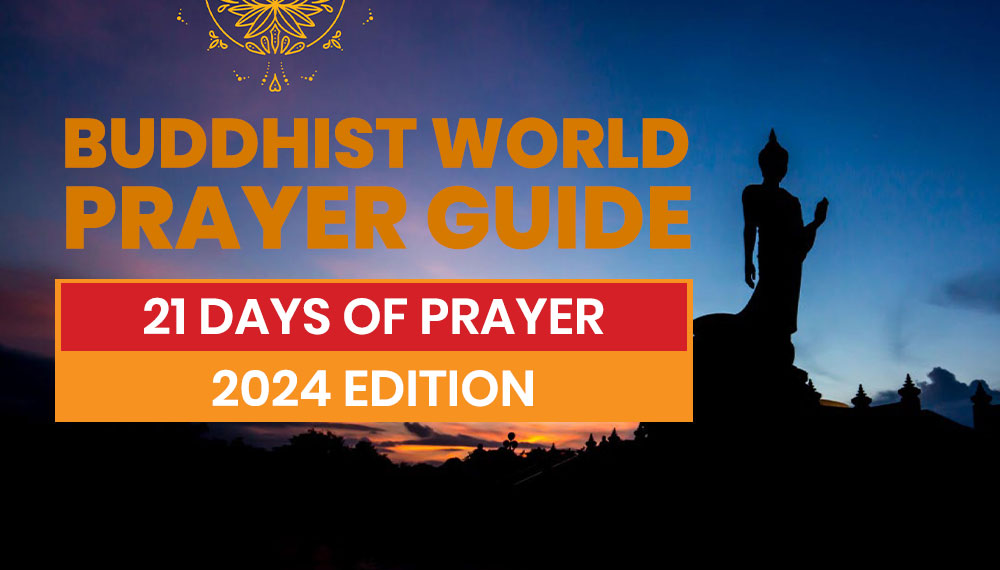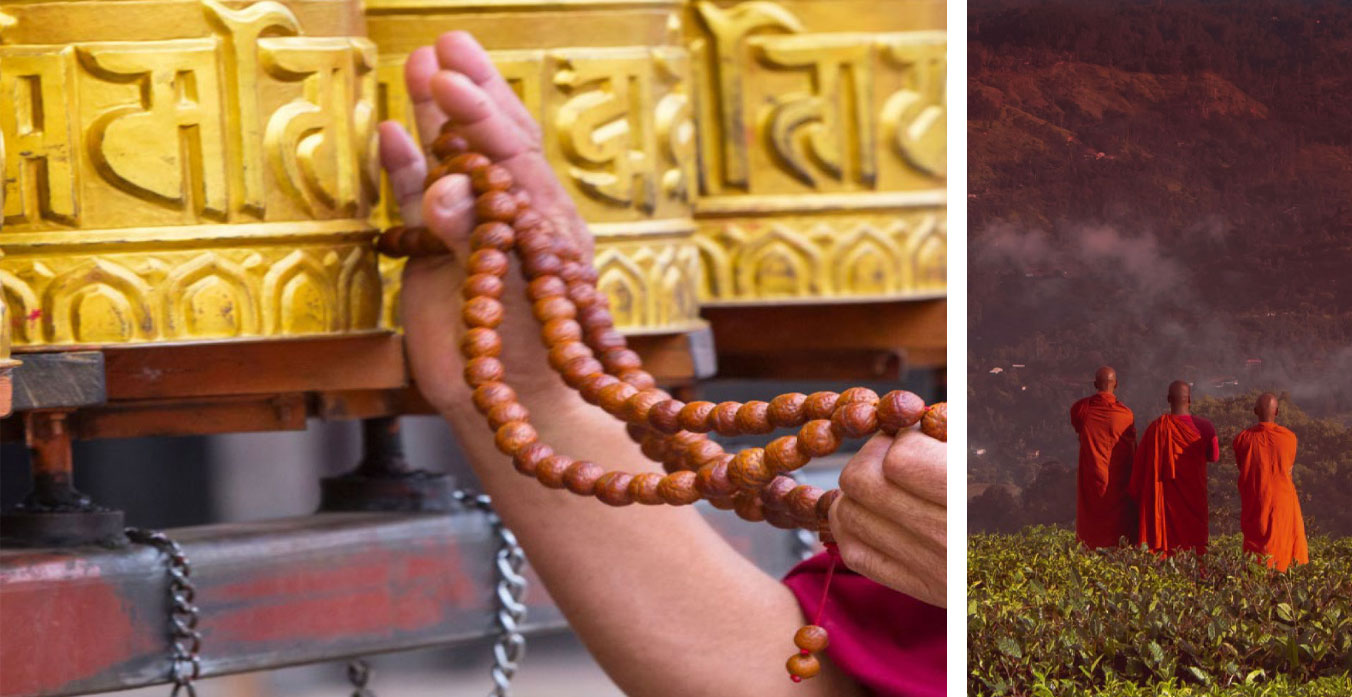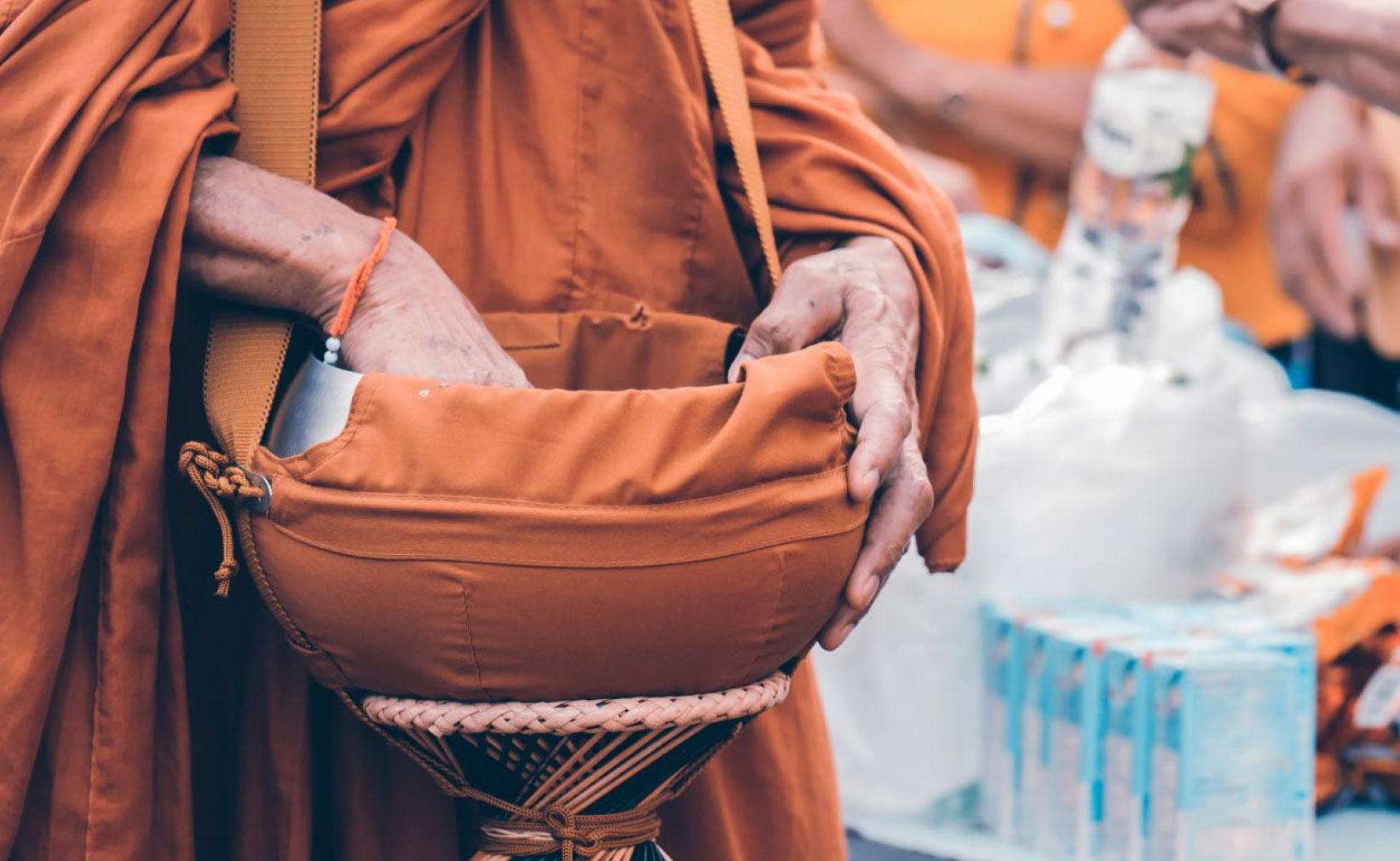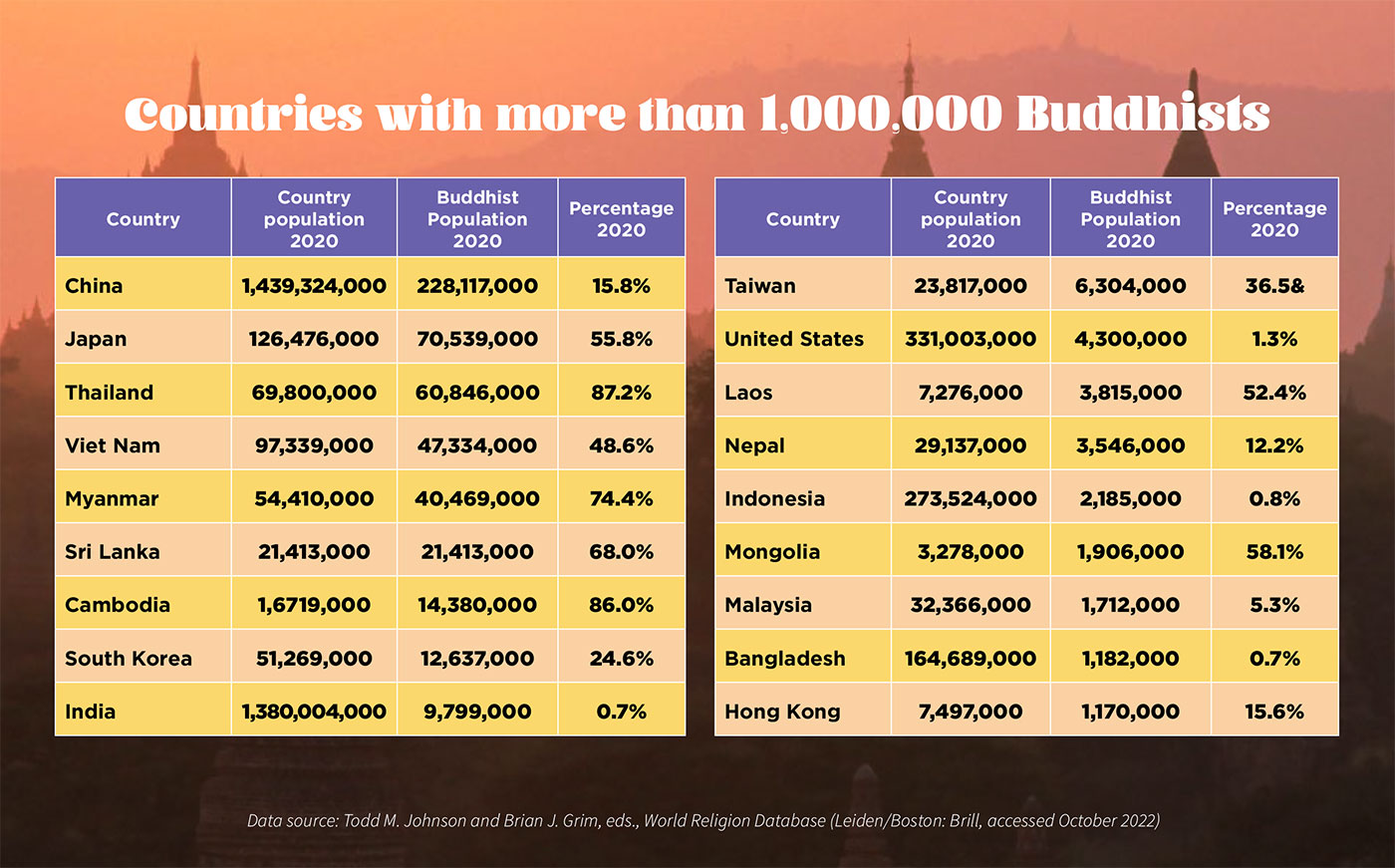
ดาวน์โหลด คู่มือสวดมนต์วันพุทธโลก 21 เล่ม 10 ภาษาอ่านใน 33 ภาษาโดยใช้วิดเจ็ตที่ด้านล่างของแต่ละหน้า!
“อย่าเหนื่อยหน่าย พวกท่านจงเติมเชื้อไฟและลุกเป็นไฟ จงเป็นผู้รับใช้ของพระอาจารย์ที่ตื่นตัวและคาดหวังอย่างร่าเริง อย่าเลิกล้มในเวลาที่ยากลำบาก อธิษฐานให้หนักขึ้น” โรม 12:11-12 ฉบับผงชูรส
คำตักเตือนในศตวรรษแรกจากอัครสาวกเปาโลสามารถเขียนได้ง่ายพอๆ กันในปัจจุบัน ด้วยความโกลาหลที่ยืดเยื้อจากโรคระบาด สงครามในยูเครน สงครามใหม่ในตะวันออกกลาง การข่มเหงผู้ติดตามพระเยซูในพื้นที่ส่วนใหญ่ของโลก และภาวะเศรษฐกิจถดถอย เป็นเรื่องง่ายที่จะยกมือถามว่า “เราจะทำอะไรได้บ้าง” คนทำ?”
พอลให้คำตอบแก่เรา มุ่งความสนใจไปที่พระคำของพระเจ้า คาดหวังว่าพระองค์จะทรงตอบสนอง และ “อธิษฐานให้หนักขึ้น”
ด้วยคำแนะนำนี้ เราขอเชิญคุณอธิษฐานโดยเฉพาะว่าพระเจ้าจะเป็นที่รู้จักของผู้คนหนึ่งพันล้านคนทั่วโลกที่อย่างน้อยก็ถือว่านับถือศาสนาพุทธ ในแต่ละวัน เริ่มตั้งแต่วันที่ 21 มกราคม 2024 คุณจะได้เรียนรู้บางอย่างเกี่ยวกับการปฏิบัติและอิทธิพลทางพุทธศาสนาในสถานที่อื่น
คู่มือสวดมนต์นี้ได้รับการแปลเป็น 30 ภาษาและเผยแพร่ผ่านเครือข่ายสวดมนต์มากกว่า 5,000 แห่งทั่วโลก คุณจะมีส่วนร่วมกับผู้ติดตามพระเยซูมากกว่า 100 ล้านคนในการวิงวอนเพื่อเพื่อนบ้านชาวพุทธของเรา
โปรไฟล์รายวันจำนวนมากมุ่งเน้นไปที่เมืองใดเมืองหนึ่งโดยเฉพาะ นี่เป็นการจงใจ เมืองที่อธิบายไว้คือเมืองเดียวกับที่ทีมสวดมนต์จากโบสถ์ใต้ดินกำลังปฏิบัติศาสนกิจในวันที่คุณกำลังอธิษฐาน! การวิงวอนของคุณต่องานของพวกเขาในแนวหน้าถือเป็นสิ่งสำคัญอย่างยิ่ง
เรายินดีต้อนรับคุณเข้าร่วมกับเรา เพื่อคง “ความคาดหวังอย่างร่าเริง” และ “อธิษฐานให้หนักขึ้น”
พระเยซูคือพระเจ้า!

Prince Gautama was born in the southern part of modern-day Nepal in the sixth century BC. A local shaman noticed marks on the child’s body and foretold that he would grow up to be a world ruler and enlightened one. His father, desiring Gautama to be a great ruler, sought to protect him by providing a life of luxury.
At age 29, however, Gautama was exposed to the suffering outside the palace where he lived. As a result he spent six years as a wandering ascetic in search of a solution to the problem of suffering. In vain he tried various meditation techniques, hoping for insight. Finally, he resolved to sit beneath a bodhi tree until he had attained the enlightenment he sought. Though tempted by Mara (the Evil One), he persisted and eventually achieved what he believed to be a realization of supreme truth. From that point on he was considered to be the “Buddha”, which means an “Awakened One” or “Enlightened One”.
The Buddha found his original companions in the search for enlightenment and preached his first sermon to them. Unlike most religions there was no supreme deity involved. Instead he outlined the “Four Noble Truths”:
“Suffering” according to the Buddha arises due to our clinging to and craving for impermanent things that keeps us all caught in an ongoing process of death and rebirth where everything, even one’s very self, is impermanent and an illusion. The only way to get off that endless cycle of rebirths is to walk the “The Middle Path”, avoiding extremes and living with right understanding, thought, speech, conduct, livelihood, effort, mindfulness, and finally right concentration. The end-goal is not eternal communion with God, but rather—like the flame of a candle being extinguished—a state where craving is ended.
People see Buddhism as their own folk religion, even though it does not relate to a high deity. As such, it’s like a blanket that falls on existing cultures and conforms to the landscapes underneath. In Tibet, the Bon religion of shamanism was overlaid with Buddhist monasteries for meditation. In Buddhist Thailand, lay people offer monks cigarettes in their alms bowls; in Buddhist Bhutan, however, smoking is a sin. The Thai Buddhist council strictly disallows women’s ordination and forbids women from entering holy places inside temple grounds, yet Nepal and England ordain female monks. Cambodian Buddhists have no discussion in the temple concerning care for the environment, while Western Buddhists incorporate environmental activism into their practice of the dharma.
* For clarity, this guide follows the Sanskrit spelling of Buddhist terms, rather than the Pali spelling. Dharma is the Sanskrit spelling; the Pali spelling would be dhamma.

Theravada Buddhism
emerged from Sri Lanka, where the Buddha’s sermons and teachings were first canonized. It focuses on the attainment of enlightenment through personal meditation and good deeds. Myanmar, Thailand, Cambodia, and Laos follow this tradition.
Mahayana Buddhism
emerged based on texts attributed to Buddha, which taught that a bodhisattva, or enlightened being, could choose to delay entering nirvana (the ultimate spiritual goal of liberation) to deliver other sentient beings from their karmic suffering (based on a person’s past actions). This stream of Buddhism was traditionally practiced in China, Japan, Vietnam and the Korean peninsula.
Tibetan Buddhism
arose in India in AD sixth century, with a focus on accelerating enlightenment through ritual practices and visualizing heavenly bodhisattvas.
In recent years Westerners have adopted various forms of Buddhism that focus primarily on a quest for inner peace. Some have joined Theravada monasteries, seeking spiritual purification through meditation and by following the five basic rules of conduct. Others have committed themselves to a Tibetan lama (monk), study the Tibetan texts and learn chanting. Still others follow a Westernized form that mixes Asian traditions with Western notions of Buddhism. They often continue in their previous occupations and wear everyday clothes, but spend time in meditation and attend retreats.
In recent years Westerners have adopted various forms of Buddhism that focus primarily on a quest for inner peace. Some have joined Theravada monasteries, seeking spiritual purification through meditation and by following the five basic rules of conduct. Others have committed themselves to a Tibetan lama (monk), study the Tibetan texts and learn chanting. Still others follow a Westernized form that mixes Asian traditions with Western notions of Buddhism. They often continue in their previous occupations and wear everyday clothes, but spend time in meditation and attend retreats.


N/A


110 CITIES - โครงการของ IPC a US 501(c)(3) No 85-3845307 | ข้อมูลเพิ่มเติม | เว็บไซต์โดย: ไอพีซี มีเดีย
110 CITIES - โครงการของ IPC a US 501(c)(3) No 85-3845307 | ข้อมูลเพิ่มเติม | เว็บไซต์โดย: ไอพีซี มีเดีย